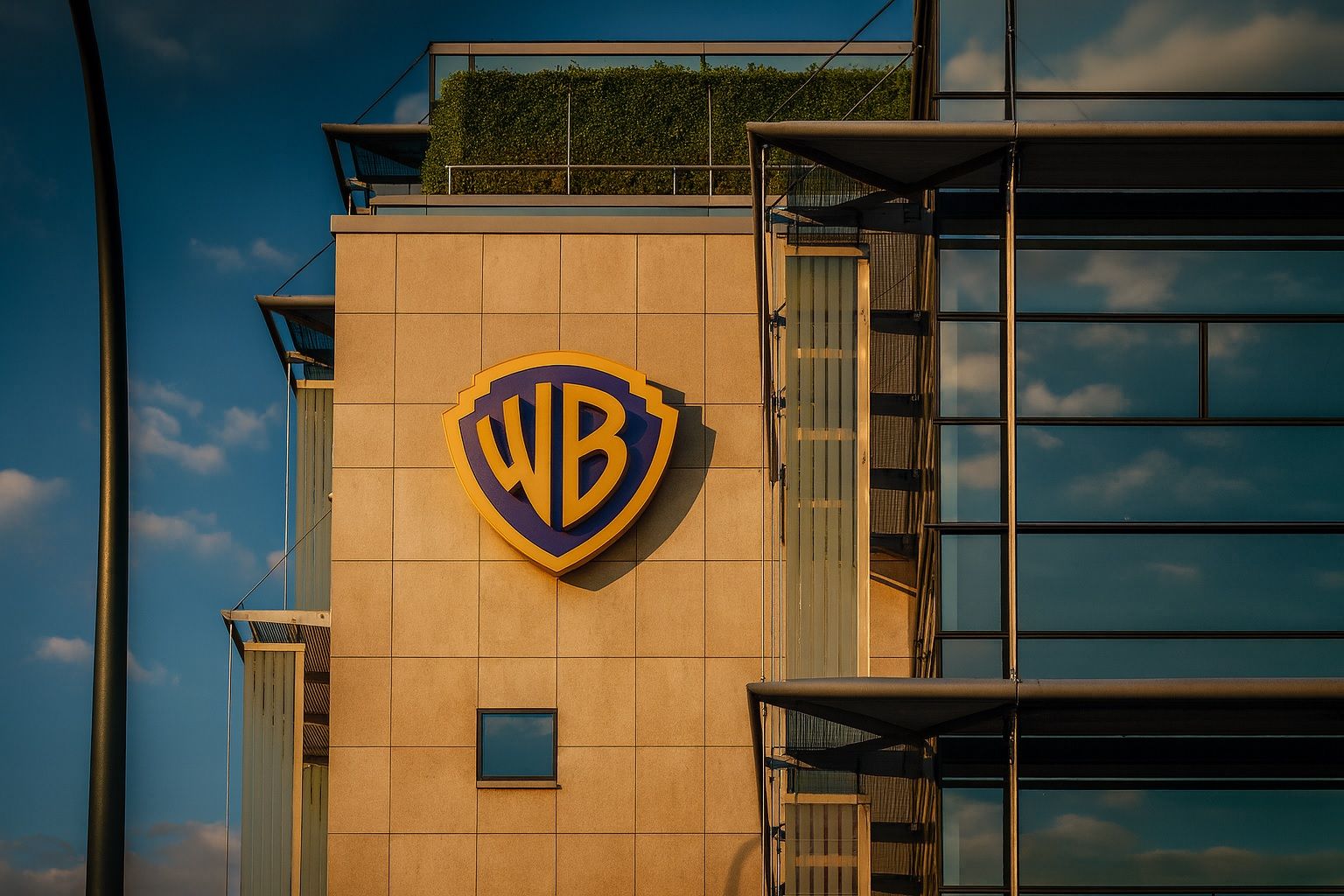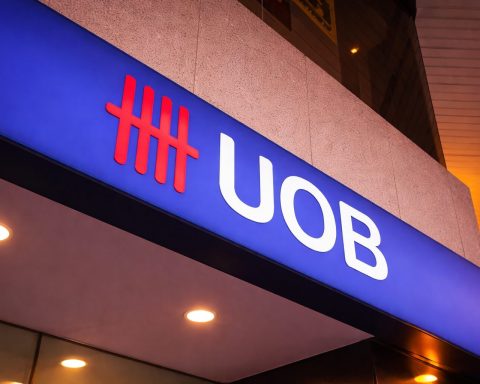- Stock Price (Oct 12, 2025): ~$17.10 (recent close) [1].
- Market Cap: ≈$42–45 billion.
- Year-to-Date Gain: ~+75% (from ~$10–12 in 2025 to ~$18–20) [2] [3].
- 52-Week Range: Low $7.25 (Oct 2024) – High $20.24 (Sept 2025) [4].
- Debt Load: Very high – roughly $35–38 billion gross debt (3.3× net leverage) [5] [6].
- Revenue & EBITDA: 2025 Q2 revenue $9.8B (up modestly YoY); Adjusted EBITDA $2.0B (+9% YoY) [7] [8].
- Streaming Subs: ~125.7 million global subscribers (Q2 2025) [9].
- Strategic Moves: Announced a 2026 split into two companies (Studios/Streaming vs. Cable Networks) [10] [11].
- Recent News: Paramount Skydance made an unsolicited bid (~$20/share) that WBD rebuffed; takeover rumors abound [12] [13]. WBD stock jumped on spinoff and M&A buzz [14].
- Analyst Sentiment: Mixed. Consensus ~“Moderate Buy”/2.4 (Outperform). Price targets vary widely ($13–$24) [15] [16]. KeyBanc warns shares “gotten ahead” on deal hype [17]; others are cautiously optimistic on synergies.
- Competitors: Disney (diversified media/parks), Netflix (pure-streaming powerhouse), Paramount (smaller, potential acquirer). Disney trades ~19× earnings vs. WBD’s ~38× [18]; Netflix far more profitable (Q2: $11.1B revenue, 34% margin [19] [20]).
Warner Bros. Discovery’s stock has roared this year on a wave of strategic developments and rumors. In June 2025 the company announced plans to split into two separate public companies – one for Studios & Streaming (film/TV studios, HBO/Max, DC, etc.) and one for Global Networks (cable channels like CNN, Discovery, TNT, etc.) [21]. Investors cheered, and then in September a much bigger catalyst surfaced: Paramount Skydance (the new Netflix-backed Paramount) quietly approached WBD with a cash-and-stock bid around $20/share. That talk sent WBD shares from the low teens up toward $20 [22]. Although WBD’s board quickly rejected the initial approach as “too low” [23], the mere possibility of a takeover kept the stock elevated. On Oct 10 (last trading day) WBD closed at $17.10 [24], near the high end of its year-long range.
Analysts attribute the recent surge to both the spinoff plan and M&A chatter [25]. Wolfe Research’s Peter Supino even notes that a merger between Warner’s content library and Paramount could unlock roughly $3 billion in annual cost savings [26], which could justify a hefty premium. However, Wall Street is divided. KeyBanc’s Brandon Nispel cautions that WBD’s rally may have “gotten ahead of itself” amid deal speculation [27]. He points out that bids around $22–$24 are possible but not guaranteed, so downside risk remains if a takeover fails to materialize. Moody’s/Downgrades and regulatory scrutiny also loom: Senator Elizabeth Warren has publicly warned that a mega-merger in this sector could hurt competition, and recent reports say Warner may face bondholder pushback over its split plan.
Financial Performance & Health
WBD’s fundamentals have long been a mixed bag. The company’s Q2 2025 results (ended June 30) showed revenue of about $9.8 billion (roughly flat YoY) [28] and Adjusted EBITDA of $2.0B (+9% YoY) [29]. Streaming and box-office hits (e.g. recent film releases) helped offset declines in old-school cable TV ad revenue. But heavy costs remain: net income was $1.6B on paper (helped by a one-time $3.0B debt extinguishment gain) [30], and free cash flow was modest (~$0.7B) [31]. WBD is swimming in debt (about $35–38B gross [32] [33]) after financing the 2022 merger and content spending. On Q2’s balance sheet, WBD had $4.9B cash vs. $35.6B debt [34] (net leverage ~3.3×). Management says it will use a big $17B bridge loan to load most debt onto the new Networks entity [35] [36], which may relieve pressure on the Studios/Streaming side. In fact, recent guidance suggests WBD aims to reduce net debt toward $30B by year-end [37].
Despite the turnaround attempts, profitability is still slim. Long-term, WBD’s trailing-12-month operating margin is under 3% [38], even though gross margins are a healthy ~43% [39]. In stark contrast, pure-play streamers like Netflix enjoy 25–30%+ margins (Netflix hit a 34% operating margin in Q2 2025 [40]). WBD’s high P/E (~60+ if you annualize the rally) is far above peers: as Motley Fool notes, WBD’s P/E ~38 is roughly double Disney’s ~19× [41]. In short, the market is pricing WBD as a high-growth story, even though revenue growth has been flat or slightly negative recently [42]. That gap creates uncertainty – some analysts (e.g. Madison & Wall’s Brian Wieser) worry the spinoff is more financial engineering than a fix, warning it could “hamstring both sides” until the deals close [43].
Media Strategy & Content Pipeline
Warner Bros. Discovery is a content powerhouse with iconic brands. Its Studios & Streaming division (to be spun out mid-2026) houses Warner Bros. film/TV (DC Universe characters, Harry Potter spinoffs, etc.), HBO/Max (recent hit “House of the Dragon”), and Discovery+ nonfiction shows. The networks side owns CNN, HGTV, Food Network, etc. Going forward, WBD is pouring resources into streaming. HBO Max has been rebranded “Max”, combining HBO and Discovery+ offerings. WBD is aggressively expanding internationally: it plans to launch Max in new markets (e.g. UK, Germany, Italy in 2026) [44], leveraging old Warner content with local productions.
On the film side, WBD has several big releases lined up (e.g. Godzilla vs. Kong 2, The Flash, Wonka, and DC movies like a Joker sequel and Superman) that should boost box office revenue. TV hits like DC’s Peacemaker and reality franchises (from Discovery’s lineup) continue to draw viewers. Additionally, WBD is emphasizing sports and news (owning the Olympics in coming years and streaming sports via Bleacher Report) and even gaming (Warner Bros. Games). In an investor conference, CFO Gunnar Wiedenfels highlighted goals like getting Warner Bros studios to break even on cash flow by the spin-off and achieving $3B EBITDA from the film business [45]. The plan is to reinvest heavily in hit content, betting that the split will unlock value (Zaslav says the separated streaming/studios arm is the true “crown jewel”) [46].
Warner Bros. Discovery CEO David Zaslav (foreground) and new CFO pick Brad Singer (inset) are leading the company through a debt-heavy split and strategic overhaul [47] [48].
Competitor Snapshot
- Disney (DIS): A diversified media/entertainment behemoth (parks, studios, ESPN, DTC). Disney’s recent strategy is to integrate Hulu into Disney+ for a unified streaming offering [49]. Disney’s stock trades around 19× earnings [50], far cheaper than WBD’s ~38×. Disney+ (incl. Hulu) has roughly 190M subscribers, larger and more profitable than HBO Max’s ~125M, but Disney also carries its own debt (though less than WBD) and heavy theme-park business.
- Netflix (NFLX): The streaming industry leader. In Q2 2025 Netflix earned $11.08B revenue and $3.78B operating income (34% margin) [51] [52], and added ~10.9M subs in H1 2025 (to ~312M total) [53]. Netflix’s profitability and growth are much stronger; its stock trades on lofty multiples (~50–70× earnings). Netflix is also investing in games and an ad tier (with ~30% of subs ad-supported [54]), but it has no legacy cable drag or huge debt.
- Paramount Global (PARA): A smaller competitor (market cap below $20B). Paramount owns CBS, Showtime, and streaming service Paramount+. It only recently emerged from bankruptcy and took on Skydance ($8B deal) to bulk up its content. Paramount’s streaming subscriber count (~60M on Paramount+) is well below WBD’s and Disney’s. Interestingly, Paramount is now trying to buy WBD, which shows its ambition. Regulatory reviews of big media deals are tougher now, so a Paramount–Warner tie-up faces headwinds.
- Others: Comcast/NBCUniversal (Peacock, Xfinity networks) and Amazon (Prime Video) also compete. Comcast is refocusing on streaming (Peacock), while Amazon uses Prime Video to enhance its Prime ecosystem. Neither is a pure content bet like WBD; they have other cash flows (cable broadband, e-commerce) to offset their media losses.
Analyst Ratings & Price Targets
Wall Street opinion is cautiously divided. Many analysts have raised WBD targets this fall on the takeover buzz, but few are outright buyers. For example, Raymond James lifted its target from $13 to $22 (Outperform) recently [55]. Bank of America bumped its target to $24 (with a Buy) [56]. Conversely, UBS (John Hodulik) raised its target only to $20 but stayed Neutral [57]. Overall, the average analyst target is around $16 (implying modest downside from today’s $17) [58]. The consensus “moderate buy” rating reflects a belief that the stock can hold its recent gains if WBD delivers on its strategy, but the wide target range ($8–$24 [59]) highlights uncertainty.
Key quotes from experts:
- Brandon Nispel (KeyBanc): Warned that WBD shares “gotten ahead of themselves” amid Paramount deal talk, and he expects caution unless a firm bid comes [60].
- Brian Wieser (Madison & Wall): A skeptical media analyst, he cautioned that splitting WBD might “hamstring” the company by focusing on financial engineering instead of operations [61].
- Peter Supino (Wolfe Research): More bullish on a takeover scenario, noting potential $3B in cost synergies if WBD merged with Skydance/Paramount [62].
Outlook
For the public investor, Warner Bros. Discovery is a high-risk, high-reward story. The stock’s recent surge has already priced in a lot of good news: the spinoff and takeover rumors are largely known, and debt remains heavy. If Paramount or another buyer steps up with a real offer (or if WBD hits its financial targets post-split), the stock could go higher. But if none of that materializes, or if the company stumbles on content or cost cuts, WBD could lag.
Bottom line: WBD is no longer a beaten-down value trap; it’s now treated like a tech/media growth play. That explains the premium valuation. Investors should keep an eye on the upcoming split progress, any official M&A announcements, and quarterly trends (especially cash flow and subscriber growth). The company’s well-known franchises and scale mean it has a solid asset base, but the heavy debt and competitive streaming landscape are ongoing challenges.
Sources: Recent news and data from Warner Bros. Discovery filings and press releases [63] [64], financial media (Bloomberg/Economic Times [65], Reuters [66]), analyst reports (KeyBanc/Goldman/BofA via AInvest [67], Motley Fool/Nasdaq [68]), and industry analyses (S&P Global on Netflix [69]). Each source is cited above.
References
1. economictimes.indiatimes.com, 2. www.nasdaq.com, 3. economictimes.indiatimes.com, 4. www.indmoney.com, 5. www.wbd.com, 6. www.reuters.com, 7. www.wbd.com, 8. www.wbd.com, 9. www.wbd.com, 10. www.reuters.com, 11. www.reuters.com, 12. economictimes.indiatimes.com, 13. www.ainvest.com, 14. www.nasdaq.com, 15. www.gurufocus.com, 16. www.gurufocus.com, 17. www.ainvest.com, 18. www.nasdaq.com, 19. www.spglobal.com, 20. www.spglobal.com, 21. www.reuters.com, 22. www.nasdaq.com, 23. economictimes.indiatimes.com, 24. economictimes.indiatimes.com, 25. www.nasdaq.com, 26. www.nasdaq.com, 27. www.ainvest.com, 28. www.wbd.com, 29. www.wbd.com, 30. www.wbd.com, 31. www.wbd.com, 32. www.wbd.com, 33. www.reuters.com, 34. www.wbd.com, 35. www.reuters.com, 36. www.investing.com, 37. www.investing.com, 38. www.gurufocus.com, 39. www.gurufocus.com, 40. www.spglobal.com, 41. www.nasdaq.com, 42. www.gurufocus.com, 43. www.reuters.com, 44. www.investing.com, 45. www.investing.com, 46. www.reuters.com, 47. www.wbd.com, 48. www.reuters.com, 49. thewaltdisneycompany.com, 50. www.nasdaq.com, 51. www.spglobal.com, 52. www.spglobal.com, 53. www.spglobal.com, 54. www.spglobal.com, 55. www.gurufocus.com, 56. www.gurufocus.com, 57. www.gurufocus.com, 58. www.gurufocus.com, 59. www.gurufocus.com, 60. www.ainvest.com, 61. www.reuters.com, 62. www.nasdaq.com, 63. www.wbd.com, 64. www.wbd.com, 65. economictimes.indiatimes.com, 66. www.reuters.com, 67. www.ainvest.com, 68. www.nasdaq.com, 69. www.spglobal.com










